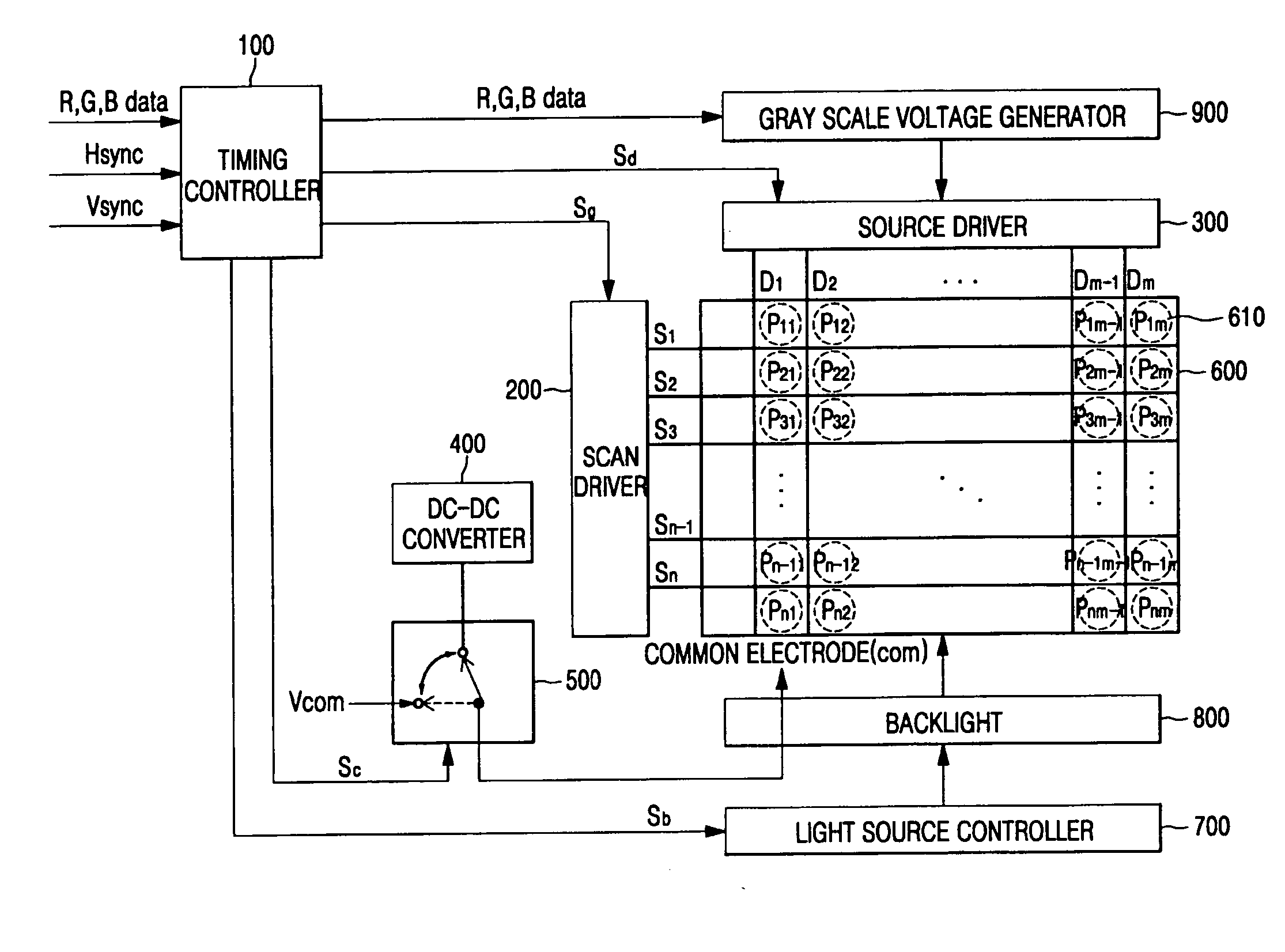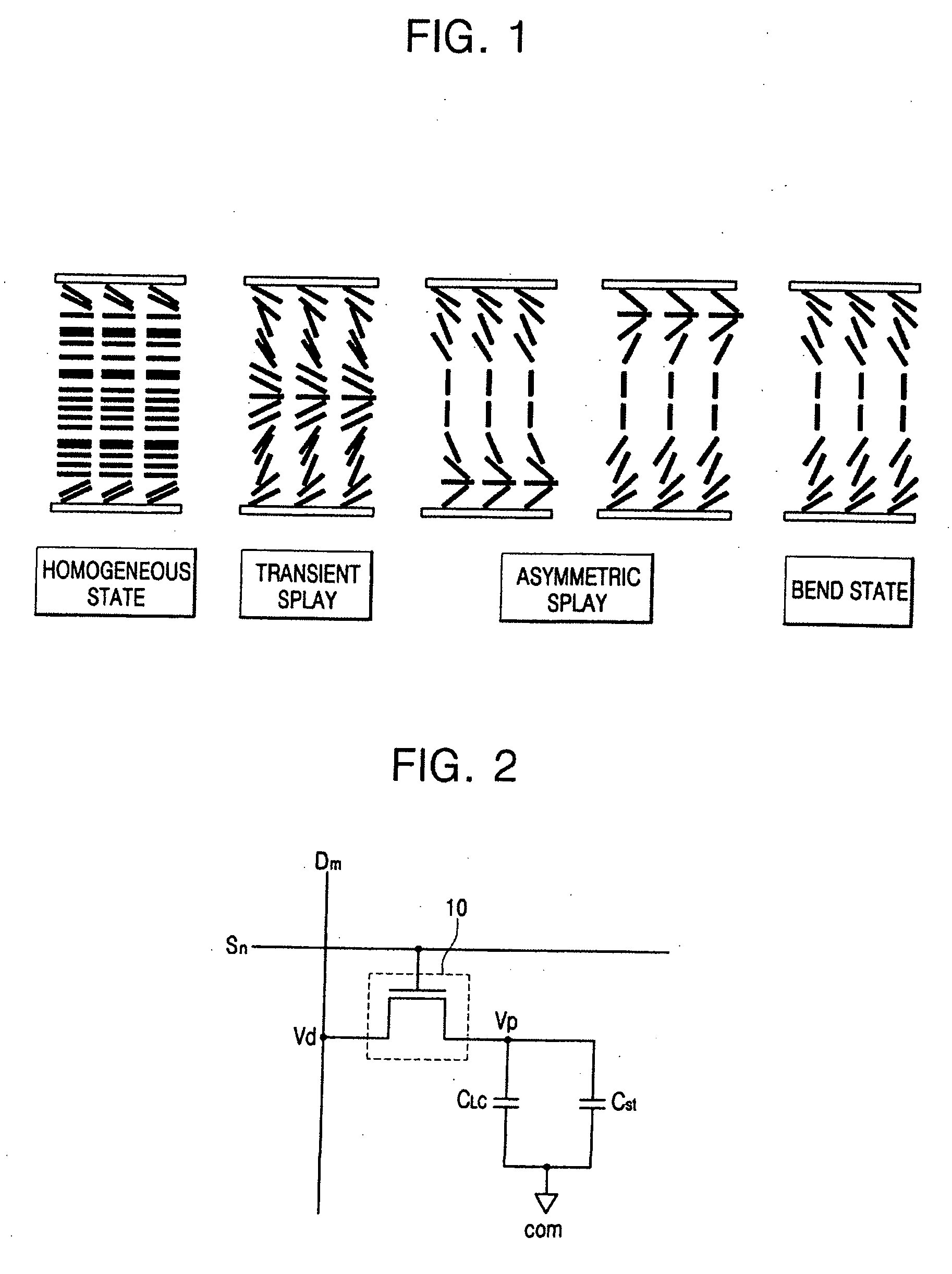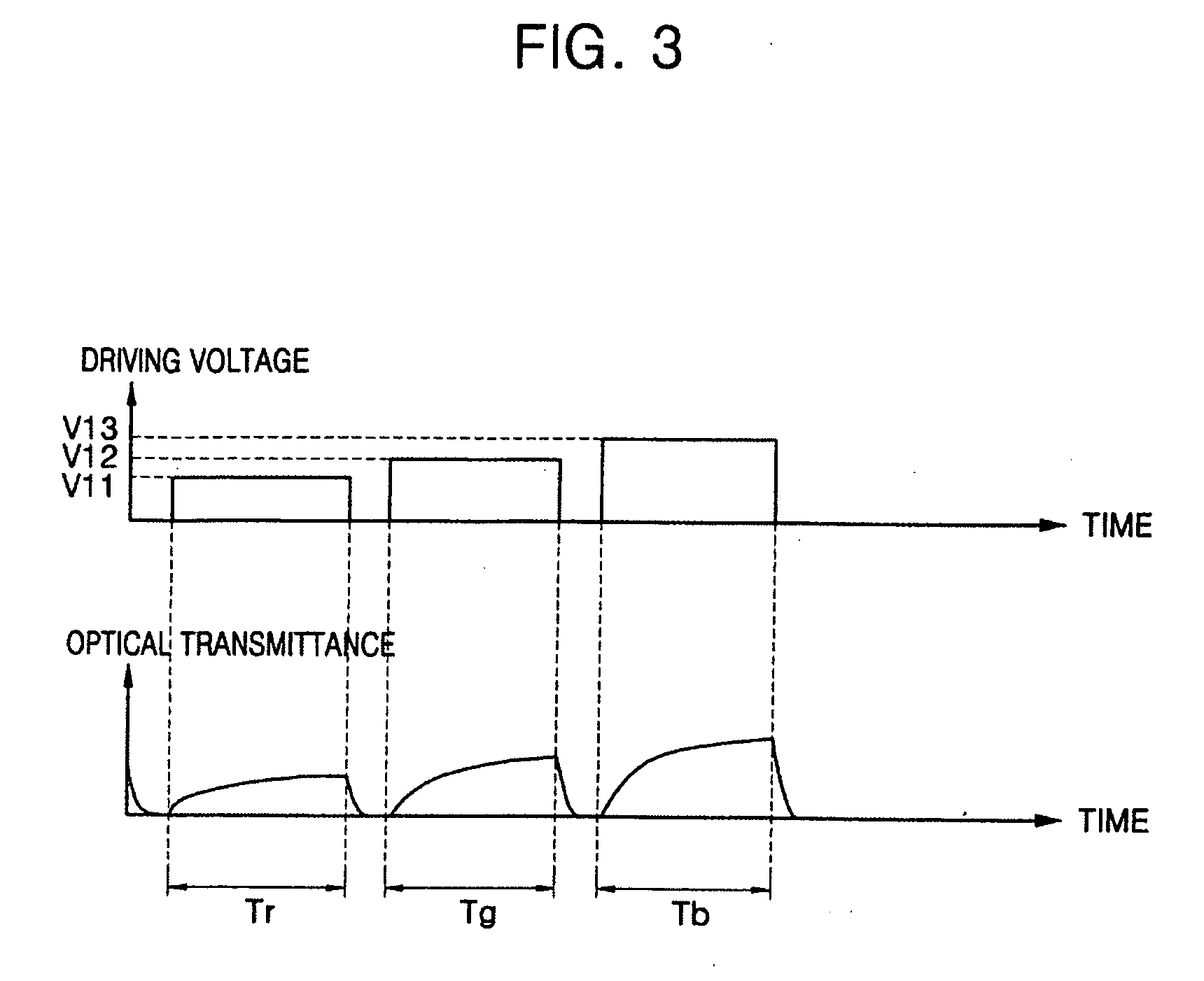Liquid crystal display device having OCB mode and method of driving the same
a liquid crystal display and display mode technology, applied in static indicating devices, optics, instruments, etc., can solve the problems of low aperture ratio, needing further improvement, and light weight of personal computers, televisions and the like, etc., to reduce blurring effect, enhance brightness, and short time
- Summary
- Abstract
- Description
- Claims
- Application Information
AI Technical Summary
Benefits of technology
Problems solved by technology
Method used
Image
Examples
first embodiment
[0067]FIG. 7 is a timing diagram illustrating a method of driving an OCB mode LCD in accordance with the present invention.
[0068] Referring to FIG. 7, an (n−1)th frame, an nth frame, and an (n+1)th frame among a plurality of frames are representatively shown. In this case, a term “frame” means that an image is represented on the LCD panel 600 by sequentially applying scan signals from a first scan line S1 to an nth scan line Sn from the scan driver 200, and sequentially applying data signals D1-Dm from a first data line D1 to an mth data line Dm from the source driver 300 in synchronization with the scan signals. In the case of a field sequential LCD, the backlight 800 sequentially emits light via a red LED, a green LED, and a blue LED. In addition, in the case of a color filter type LCD, the backlight 800 emits white light (e.g. WLED or CCFL), and has red, green, and blue color filters per unit pixel so that colors can be implemented via respective color filters.
[0069] Referring t...
second embodiment
[0076]FIG. 8 is a timing diagram illustrating a method of driving a field-sequential LCD having an OCB mode in accordance with the present invention.
[0077] Referring to FIG. 8 and the LCD shown in FIG. 6, in the field-sequential LCD, one frame is divided into red (R), green (G), and blue (B) fields. Each of the plurality of pixels 610 arranged in the LCD panel 600 in a matrix form sequentially displays three primary lights of R, G, and B colors output from the R, G, and B backlights in a time-division manner, thereby displaying a color image using an afterimage effect on vision.
[0078] When a first scan signal S1(R) is applied to a first scan line S1 from the scan driver 200 in the R field of the frame, pixels P11-P1m, which are connected to the first scan line S1 are selected. R data signals DR11-DR1m over data lines D1-Dm are provided from the source driver 300 to pixel electrodes as lower electrodes of liquid crystal capacitors CLC of the pixels P11-P1m, which are connected to th...
third embodiment
[0090]FIG. 9 is a timing diagram illustrating a method of driving an OCB mode LCD in accordance with the present invention.
[0091] Referring to FIG. 9 and the LCD shown in FIG. 6, in the method of driving the LCD according to the third embodiment of the present invention, when scan signals are sequentially applied to scan lines S1-Sn from the scan driver 200, a plurality of pixels P11-Pnm connected to the scan lines S1-Sn are sequentially selected, and data signals D11, D12, and D13 are provided from the source driver 300 to pixel electrodes as lower electrodes of liquid crystal capacitors CLC of the pixels P11-P1m, which are connected to the scan lines S1-Sn, respectively. In this case, a common electrode is an upper electrode of the liquid crystal capacitor CLC and is applied with a common voltage Vcom as a reference voltage while the scan lines S1-Sn are driven. In addition, while the scan lines S1-Sn are driven, the backlight 800 emits light sources, which are transmitted through...
PUM
 Login to View More
Login to View More Abstract
Description
Claims
Application Information
 Login to View More
Login to View More - R&D
- Intellectual Property
- Life Sciences
- Materials
- Tech Scout
- Unparalleled Data Quality
- Higher Quality Content
- 60% Fewer Hallucinations
Browse by: Latest US Patents, China's latest patents, Technical Efficacy Thesaurus, Application Domain, Technology Topic, Popular Technical Reports.
© 2025 PatSnap. All rights reserved.Legal|Privacy policy|Modern Slavery Act Transparency Statement|Sitemap|About US| Contact US: help@patsnap.com



